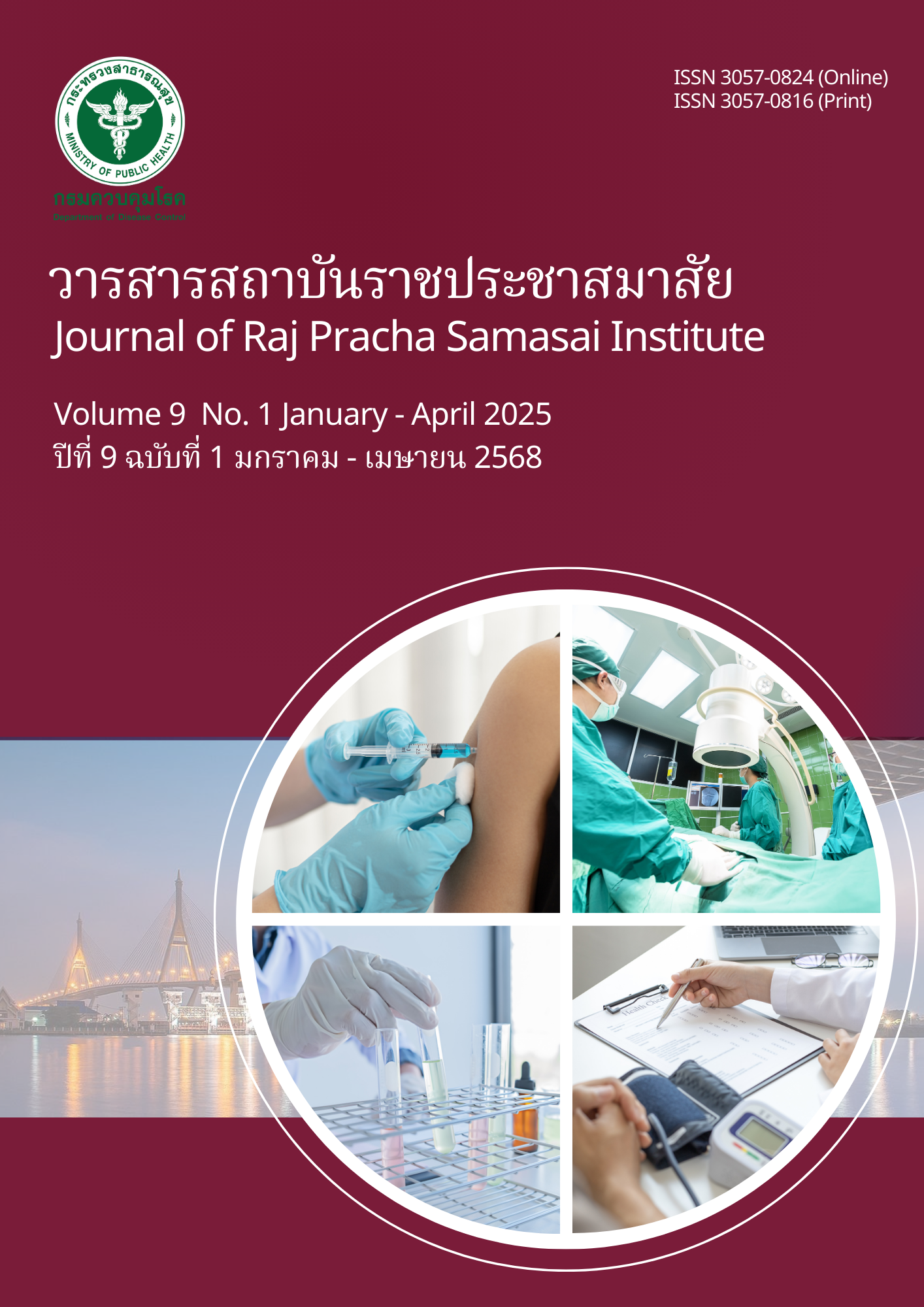แปรงสีฟันอัจฉริยะและผลกระทบต่อสุขภาพช่องปาก (การบูรณาการเทคโนโลยี และการดูแลสุขภาพที่ครอบคลุม)
Main Article Content
บทคัดย่อ
บทนำ โรคทางช่องปากส่งผลกระทบต่อประชากรกว่า 3.5 พันล้านคนทั่วโลก โดยมีผลต่อสุขภาพกาย อารมณ์ และเศรษฐกิจ แปรงสีฟันอัจฉริยะเป็นนวัตกรรมใหม่ที่ช่วยแก้ปัญหาของแปรงสีฟันแบบเดิม และแปรงสีฟันไฟฟ้าแบบทั่วไปด้วยคุณสมบัติของการให้ข้อมูลแบบเรียลไทม์ การเชื่อมต่อแอปพลิเคชัน และการดูแลสุขภาพช่องปากแบบเฉพาะบุคคล ช่วยปรับปรุงสุขอนามัยในช่องปากสำหรับประชากรกลุ่มต่างๆ
วัตถุประสงค์ เพื่อศึกษาการพัฒนาและประสิทธิภาพของแปรงสีฟันอัจฉริยะในการส่งเสริมสุขภาพช่องปาก โดยเน้นผลกระทบต่อกลุ่มประชากรที่หลากหลายและคุณสมบัติทางเทคโนโลยี ประโยชน์ในการกำจัดคราบจุลินทรีย์และดูแลเหงือก รวมถึงความท้าทายและความสามารถของแปรงสีฟันอัจฉริยะในปัจจุบันและศักยภาพในอนาคต เพื่อพัฒนาการดูแลสุขอนามัยในช่องปาก
วิธีการศึกษา ทบทวนวรรณกรรมแบบ Systematic review และวิเคราะห์การพัฒนาการใช้งานและประสิทธิภาพของแปรงสีฟันอัจฉริยะ โดยคัดเลือกงานวิจัยที่ผ่านการตรวจสอบโดยผู้ทรงคุณวุฒิ ในปี ค.ศ. 2000 - 2024 จาก PubMed, Scopus และ Google Scholar โดยใช้คำค้นหาเช่น "แปรงสีฟันอัจฉริยะ" และ "เทคโนโลยีสุขภาพช่องปาก" งานวิจัยที่ได้รับการคัดเลือกจะต้องศึกษาผลลัพธ์ทางสุขภาพช่องปากในประชากรที่หลากหลาย และมีการตัดบทความที่ไม่ใช่ภาษาอังกฤษหรือไม่มีพื้นฐานทางวิทยาศาสตร์ออก
ผลการศึกษา แปรงสีฟันอัจฉริยะปรับปรุงเทคนิคการแปรงฟัน ลดคราบจุลินทรีย์ และป้องกันโรคเหงือก มีการใช้เทคโนโลยีปัญญาประดิษฐ์ (AI) เช่น การให้ข้อมูลแบบเรียลไทม์ และอัลกอริทึมการเรียนรู้ของเครื่อง Machine Learningทำให้การแปรงฟันมีประสิทธิภาพมากขึ้นและช่วยเพิ่มอัตราการขจัดคราบจุลินทรีย์ได้สูงถึง 87% เมื่อเทียบกับแปรงสีฟันทั่วไป นอกจากนี้เครื่องมือแบบอินเทอร์ แอคทีฟ เช่น เทคโนโลยีเสมือนจริง (AR) และเกมมิฟิเคชัน อย่าง Brush Monster ช่วยส่งเสริมพฤติกรรมการดูแลช่องปากในเด็กและบุคคลที่มีความบกพร่องทางสติปัญญาทำให้สามารถแปรงฟันได้อย่างอิสระและลดภาระของผู้ดูแล แปรงสีฟันอัจฉริยที่มีบลูทูธและระบบติดตามข้อมูลผ่านแอปพลิเคชัน ยังช่วยให้การดูแลสุขภาพช่องปากเป็นรายบุคคล โดยเฉพาะในกลุ่มผู้ที่มีภาวะบกพร่องทางสติปัญญาและโรคเรื้อรัง เช่น เบาหวานชนิดที่ 2 นอกจากนี้แปรงสีฟันอัจฉริยะยังช่วยทำความสะอาดอวัยวะเทียมในช่องปาก (Prosthetic cleaning) สำหรับผู้ไร้ฟัน (Edentulous patients) ช่วยส่งเสริมสุขภาพเหงือก และควบคุมระดับน้ำตาลในเลือดสำหรับผู้ป่วยเบาหวาน พบความท้าทายด้านราคาที่สูงและปัญหาด้านความเป็นส่วนตัวของข้อมูล ยังคงเป็นอุปสรรคที่ต้องได้รับการแก้ไข โดยเน้นไปที่นวัตกรรมที่ยั่งยืนและการเข้าถึงที่เท่าเทียมกัน
สรุป แปรงสีฟันอัจฉริยะเป็นนวัตกรรมที่พัฒนาการดูแลสุขภาพช่องปาก และช่วยปรับปรุงคุณภาพชีวิตของประชากรกลุ่มต่างๆ การนำเทคโนโลยีนี้มาใช้ร่วมกับการพัฒนาทางวิทยาศาสตร์ นโยบายสนับสนุน และการทำงานร่วมกัน ระหว่างสาขาวิชาจะช่วยผลักดันให้การดูแลสุขภาพช่องปากเป็นไปอย่างยั่งยืนและเข้าถึงได้ทั่วโลก
Downloads
Article Details

อนุญาตภายใต้เงื่อนไข Creative Commons Attribution-NonCommercial-NoDerivatives 4.0 International License.
ประกาศเกี่ยวกับลิขสิทธิ์
บทความที่ลงพิมพ์ในวารสารสถาบันราชประชาสมาสัย ถือว่าเป็นผลงานทางวิชาการหรือการวิจัย และวิเคราะห์ตลอดจนเป็นความเห็นส่วนตัวของผู้นิพนธ์ ไม่ใช่ความเห็นกองบรรณาธิการแต่ประการใด ผู้นิพนธ์จำต้องรับผิดชอบต่อบทความของตน
นโยบายส่วนบุคคล
ชื่อและที่อยู่อีเมลที่ระบุในวารสารสถาบันราชประชาสมาสัย จะถูกใช้เพื่อวัตถุประสงค์ตามที่ระบุไว้ ในวารสารเท่านั้น และจะไม่ถูกนำไปใช้สำหรับวัตถุประสงค์อื่น หรือต่อบุคคลอื่นใด
เอกสารอ้างอิง
Duangthip D, Chu CH. Challenges in oral hygiene and oral health policy. Frontiers in Oral Health. 2020;1:575428 doi. 10.3389/froh.2020.575428
World Health Organization. Global oral health status report: towards universal health coverage for oral health by 2030. Geneva: World Health Organization; 2022.
Toshniwal SH, Reche A, Bajaj P, Maloo LM. Status quo in mechanical plaque control then and now: a review. Cureus. 2022:14(8):e28613. doi. 10.7759/cureus.28613
Liu L. The impact of innovation of electric toothbrush. In: Li CG, Lin JJ, Huang T, Abedin MZ, Ahmed S, editors. Proceedings of the 7th International Conference on Financial Innovation and Economic Development (ICFIED 2022); 2022 Jan 14-16; online. Dordrecht: Atlantis Press; 2022. p. 1794-9.
Scquizzato T, Gazzato A. Adopting a smart toothbrush with artificial intelligence may improve oral care in patients admitted to the intensive care unit. Critical Care. 2019;23(1):223. doi. 10.1186/s13054-017-1755-5
Yang M, Yang J, Zhao Y, Wei H, Shang Y. Enhancement plaque control in preschool children by an intelligent brushing guide device. Journal of Clinical Pediatric Dentistry. 2024;48(2):121-128. doi. 10.22514/jocpd.2024.041
Chen CH, Wang CC, Chen YZ. Intelligent brushing monitoring using a smart toothbrush with recurrent probabilistic neural network. Sensors. 2021;21(4):1238. doi. 10.3390/s21041238
Jeon B, Oh J, Son S. Effects of tooth brushing training based on augmented reality using a smart toothbrush on oral hygiene care among people with intellectual disability in Korea. Healthcare. 2021;9(3):348. doi. 10.3390/healthcare9030348
Kim KS, Yoon TH, Lee JW, Kim DJ. Interactive toothbrushing education by a smart toothbrush system via 3D visualization. Computer methods and programs in biomedicine. 2009;96(2):125-32. doi. 10.1016/j.cmpb.2009.04.006
Shakeri Jannati ME, O’Byrne SK, Moussavi Z. Design, Implementation and Evaluation of A Smart toothbrush for Individuals with Dementia. InFrontiers in Biomedical Devices. 2023;86731: V001T09A011. doi. 10.1115/DMD2023-8625
Humm V, Wiedemeier D, Attin T, Schmidlin P, Gartenmann S. Treatment success and user-friendliness of an electric toothbrush app: a pilot study. Dentistry journal. 2020;8(3):97 doi. 10.3390/dj8030097
Walters PA, Cugini M, Biesbrock AR, Warren PR. A novel oscillating-rotating power toothbrush with SmartGuide: designed for enhanced performance and compliance. J Contemp Dent Pract. 2007;8(4):1-9.
Alkilzy M, Midani R, Höfer M, Splieth C. Improving toothbrushing with a smartphone app: results of a randomized controlled trial. Caries research. 2019;53(6):628-35. doi. 10.1159/000499868
Adam R. Introducing the Oral-B iO electric toothbrush: next generation oscillating-rotating technology. International dental journal. 2020;70:S1-6. doi. 10.1111/idj.12570
Janusz K, Nelson B, Bartizek RD, Walters PA, Biesbrock AR. Impact of a novel power toothbrush with SmartGuide technology on brushing pressure and thoroughness. J Contemp Dent Pract. 2008;9(7):1-8. doi. 10.5005/jcdp-9-7-1
Jeong JS, Kim KS, Lee JW, Kim KD, Park W. Efficacy of tooth brushing via a three-dimensional motion tracking system for dental plaque control in school children: a randomized controlled clinical trial. BMC oral health. 2022;22(1):626. doi. 10.1186/s12903-022-02665-6
France K, Urquhart O, Ko E, Gomez J, Ryan M, Hernandez M, et al. A Pilot Study Exploring Caregivers’ Experiences Related to the Use of a Smart Toothbrush by Children with Autism Spectrum Disorder. Children. 2024;11(4):460. doi. 10.3390/children11040460
Flyborg J. Improving oral health assisted by smart powered toothbrushes and exploring their role in innovative health technology [Doctoral dissertation]. Karlskrona: Blekinge Tekniska Högskola; 2024. 138 p.
Maeda T, Mukaibo T, Masaki C, Thongpoung S, Tsuka S, Tamura A, et al. Efficacy of electric-powered cleaning instruments in edentulous patients with implant-supported full-arch fixed prostheses: a crossover design. International Journal of Implant Dentistry. 2019:5(7)1-8. doi. 10.1186/s40729-019-0164-8
Burgess DK. Efficacy of a Smart Toothbrush on Glycemic Control in Patients With Type 2 Diabetes Mellitus and Chronic Periodontitis [master’s thesis]. Cambridge (MA): Harvard University School of Dental Medicine; 2023. 24 p.
Shah A. How eco-friendly are our toothbrushes?. British Dental Journal. 2020;229(5):300-1. doi. 10.1038/s41415-020-2124-3.
Lyne A, Ashley P, Saget S, Costa MP, Underwood B, Duane B. Combining evidence-based healthcare with environmental sustainability: using the toothbrush as a model. British Dental Journal. 2020;229(5):303-9. doi. 10.1038/s41415-020-1981-0.
Yoshimura S, Mizumoto T, Matsuda Y, Ueda K, Takeyama A. Measuring Health Conditions Every Morning using a Smart Toothbrush with a Gas Sensor. work. 2021. doi. 10.3233/AISE220065


